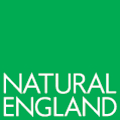Each bird that is submitted to the PBMS is given a post-mortem examination during which approximately 60 macroscopic observations and measurements are made.
These observations can be used to generate population health indices that can inform us about the status of recruitment and survival, physiological stress, and nutritional status in the population.
Changes in these indices may indicate where the population is under stress and therefore highlight where we might focus our monitoring to determine if chemical exposure is contributing to the changes observed.
For each species listed below a range of population health indices are calculated to help assess the state of predatory birds submitted to us.
These health indices were analysed for each species over the period 2000 to 2016. For each index we determined an average and 95% prediction intervals for indices that had not changed over time and trend lines for indices that had changed. Data for subsequent years have been added to the graphs for each index. Data for birds in the current year are added as the birds are necropsied and so the data are subject to update as new birds are examined.
The intention is that these health indices can be used to identify trends that may indicate a significant change in the status of the population studied.
Graphs of health indices with trend lines are available for the following species:
A summary of recent findings here






